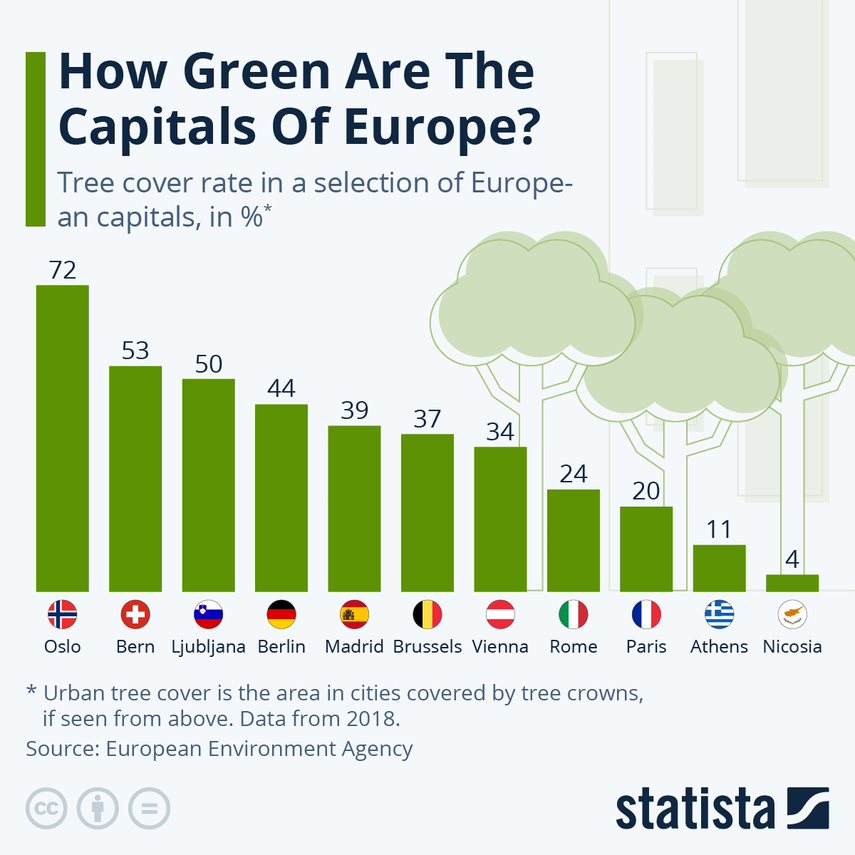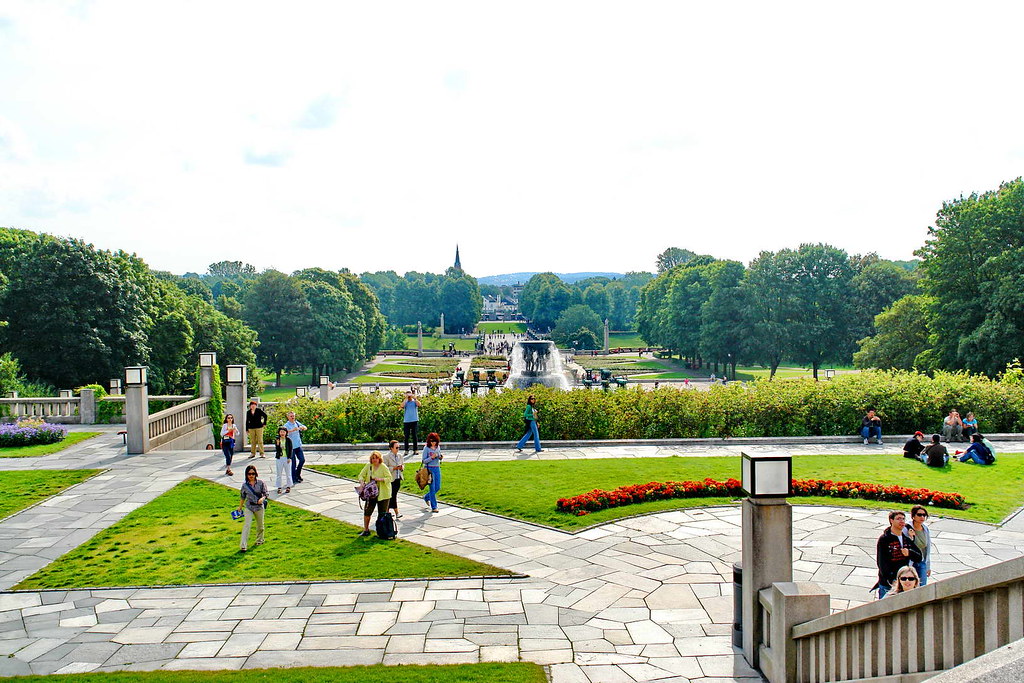With all the talk of global warming and increasingly frequent heatwaves, it’s cities—especially the largest ones—that often suffer the most.
This has led some urban planners and developers to promote the idea of extensive green and wooded areas in urban zones, a strategy currently under discussion for Paris, to create what are known as ‘cooling islands’. The main goal of this is to lower the temperature by several degrees during heatwaves.
And it works so well that many cities, particularly in Europe, have adopted the formula. That said, the pace of change varies from one country to another, with some still lagging behind.
Which is Europe’s greenest capital?
As is often the case with environmental and ecological matters, we need to look north—though for once, Southern Europe isn’t doing too badly either.
Of all the continent’s capitals, Norway’s Oslo comes out on top. With places like the vast Frogner Park, the Botanical Garden, the Oslo Fjord, and the extensive forests that surround it, the city enjoys a wonderfully natural and green setting. This is far more than anywhere else, as its “urban green cover” reaches an impressive 77% of its total area, placing it ahead of Zagreb (Croatia) and Helsinki (Finland) in the top three.
As for Paris, when the last figures were released (in 2021), the city was below the European average of 41% with just 26% green cover—better than Athens but not as good as Rome or Amsterdam. However, with the current plans being considered by the Parisian authorities, things could well change in the near future.
The greening of Paris
For some time now, the French capital has embarked on an ambitious greening project to transform itself and face the challenges of climate change and heatwaves, all to improve the quality of life for its residents. This is part of what is known as the city of Paris’s “New Biodiversity Plan 2025-2030”.
Without going into every detail, the idea is to create 300 hectares of new green spaces by 2030, including parks, gardens, and squares, as well as turning derelict urban sites into natural havens.
In addition, more than a hundred Parisian streets and squares will be greened, along with places like schools and nurseries. And let’s not forget the many rooftops and facades that will be covered in vegetation, with some terraces even dedicated to “urban farming” for the production of fruit and vegetables. To round off the most iconic actions, there is also a project to plant 170,000 new trees by 2026.
This should certainly be enough to help Paris climb the rankings of Europe’s greenest capitals…

You can find more infographics on Statista

